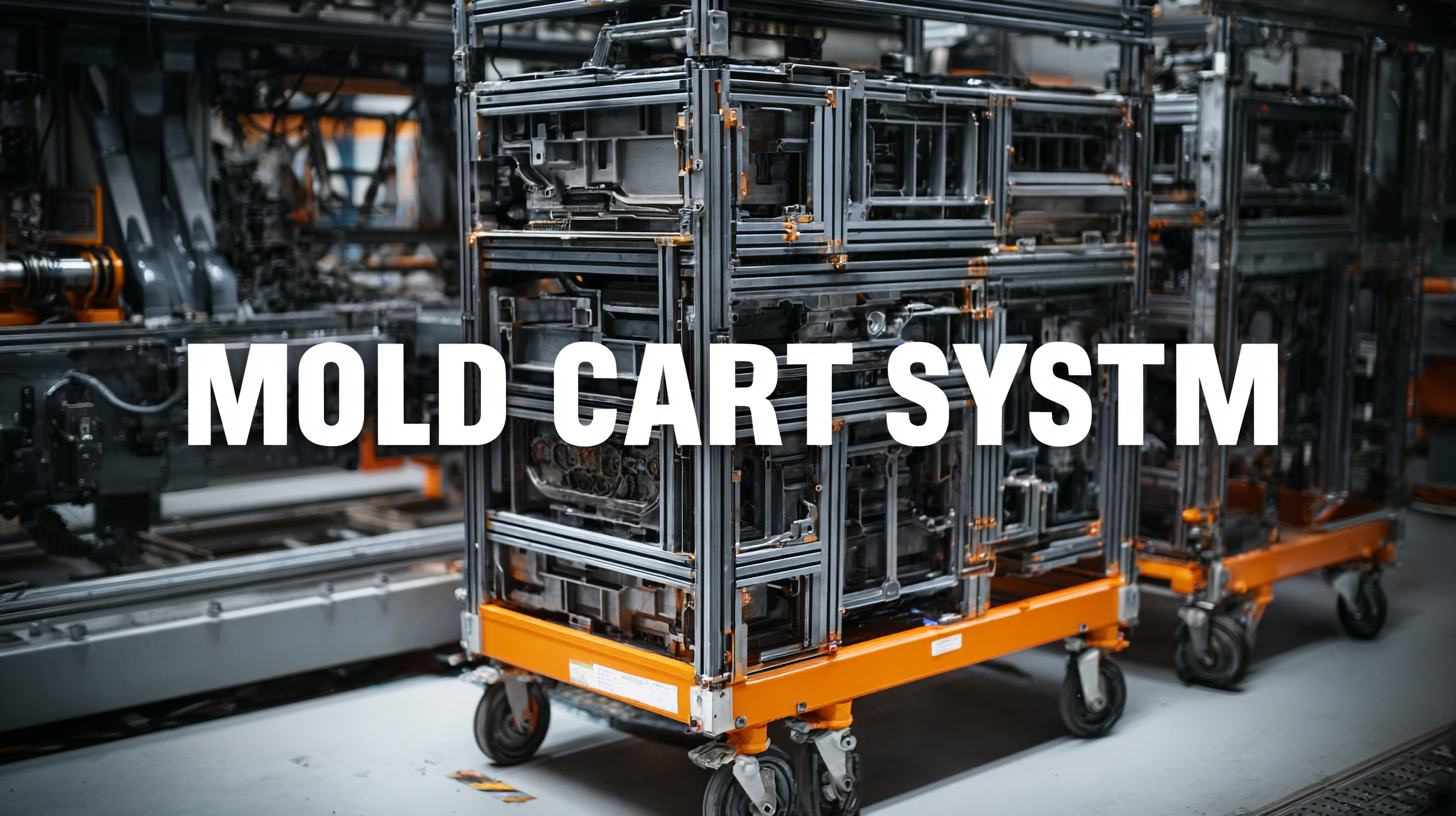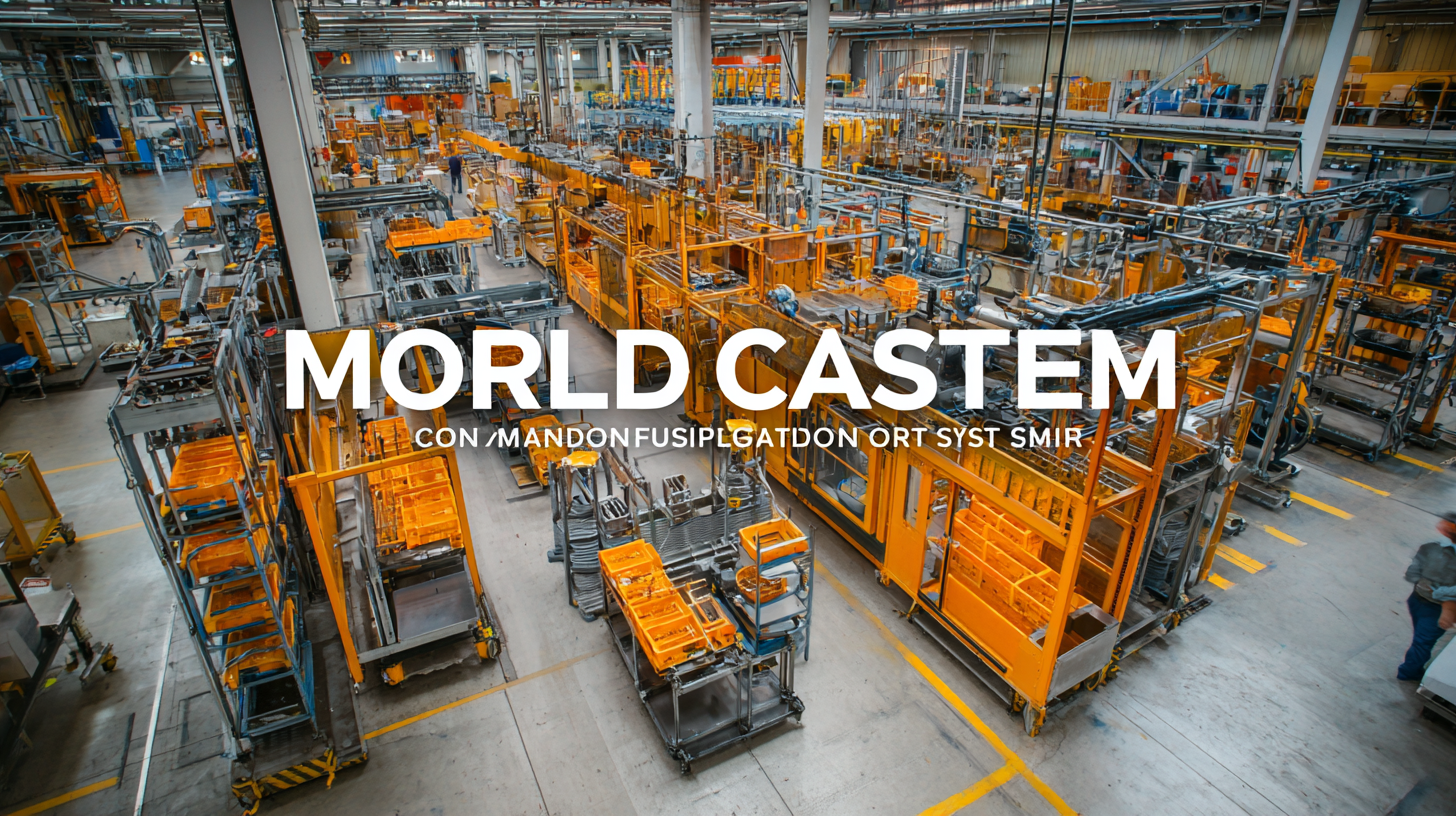Transforming Manufacturing Efficiency: How to Implement the Best Mold Cart System in Your Production Line
In the rapidly evolving landscape of manufacturing, efficiency is paramount, and the adoption of advanced solutions has become increasingly crucial. According to a 2025 industry report by McKinsey & Company, production efficiency can increase by up to 30% with the right technological implementations. One pivotal element in enhancing production workflows is the Mold Cart System, which has proven to optimize material handling and reduce lead times significantly. By integrating an effective Mold Cart System, manufacturers can streamline their processes, minimize downtime, and ultimately boost their bottom line. With the pressure to remain competitive, understanding how to implement the best Mold Cart System tailored to specific production needs is essential for businesses aiming for sustainable growth in today's digitally driven market.

Understanding the Importance of Mold Cart Systems in Manufacturing Efficiency
In the fast-paced world of manufacturing, efficiency is paramount, and the integration of mold cart systems can be a pivotal factor in achieving it. A recent report from the Association for Manufacturing Technology indicates that companies utilizing advanced mold handling systems can improve overall production efficiency by as much as 30%. This increase is a direct result of minimizing downtime associated with manual handling and transportation of molds, which is often labor-intensive and prone to delays. By adopting a systematic approach to mold management, manufacturers can significantly streamline their operations.

Moreover, the implementation of mold cart systems not only boosts efficiency but also enhances workplace safety. According to a study conducted by the National Safety Council, overexertion and repetitive motion injuries account for nearly 33% of workplace injuries in manufacturing. Mold cart systems reduce the physical burden on workers, thereby lowering injury rates and contributing to a more productive environment. As manufacturers invest in ergonomic solutions, they are also contributing to lower insurance costs and increased employee satisfaction, creating a win-win scenario for both productivity and workforce morale.
Key Features to Look for in an Ideal Mold Cart System
When it comes to manufacturing efficiency, choosing the right mold cart system is crucial. An ideal mold cart system should provide optimal organization and enhance workflow, which ultimately helps to reduce downtime in production. According to a recent report by the Association for Manufacturing Technology, companies that implement streamlined cart systems can improve their operational efficiency by up to 25%. Key features to look for include durability, ease of maneuverability, and customizable storage options. Durable materials ensure longevity, while a design that allows for easy navigation between workstations can significantly reduce the time spent transporting materials.
Tip: Evaluate the weight capacity of the mold cart to ensure it can handle the various molds you work with. A system that can adapt to different mold sizes enhances versatility and improves overall productivity. Additionally, consider a cart with modular features that allow for reconfiguration as your production needs evolve.
Another essential aspect is safety. An ideal mold cart system should minimize physical strain on workers and reduce the risk of accidents. Features like ergonomic handles and secure storage compartments contribute to a safer work environment. A study by the National Safety Council highlights that improvements in workplace ergonomics can lead to a reduction in work-related injuries by up to 40%.
Tip: Invest in carts with non-slip wheels for better stability and control, especially on uneven surfaces. By focusing on these key features, manufacturers can significantly enhance their production efficiency and worker safety.

Step-by-Step Guide to Implementing a Mold Cart System in Your Production Line
Implementing a mold cart system in your production line can significantly enhance manufacturing efficiency by improving organization and reducing defects. A step-by-step approach is crucial for successful implementation. Begin by assessing your current workflow and identifying bottlenecks. According to industry reports, inefficient material handling can account for up to 20% of production costs. By optimizing the layout with a mold cart system, you can minimize waste and streamline operations.
Next, focus on training and engagement. In a case study on defect reduction utilizing DMAIC and Lean Six Sigma methodologies, it was found that organizations that prioritized employee involvement experienced a 30% reduction in defects. This aligns with the implementation of a mold cart system, where training staff on proper usage and maintenance is vital. Ensure that your team understands how to effectively utilize the cart system to enhance movement and accessibility of molds, which directly impacts productivity and quality.
Lastly, regularly review and adjust your mold cart system. Continuous improvement is key to maintaining efficiency. Data suggests that organizations implementing systematic reviews of their processes can see up to a 25% increase in productivity over time. By following these steps, you can create a responsive and efficient manufacturing environment that adapts to the ever-changing demands of the industry.
Training and Best Practices for Maximizing Mold Cart Usage
To maximize mold cart usage in your production line, training personnel on best practices is essential. A study from the Association for Manufacturing Excellence (AME) indicates that organizations implementing systematic training can boost efficiency by up to 30%. Emphasizing the importance of ergonomics in mold handling during training sessions can significantly reduce injury rates, ensuring that workers can operate these systems safely and effectively.
Tip: Encourage regular refreshers for operators—short training sessions every quarter can keep best practices top of mind. Incorporating real-time feedback and performance tracking can also enhance skills and improve overall productivity.
Additionally, utilizing a standardized mold cart system can streamline operations. According to a report from the Fabricators & Manufacturers Association (FMA), companies that standardized their handling systems saw a reduction in mold retrieval time by approximately 20%. Implementing color-coded carts or labeling systems helps in quickly identifying the required molds, thus reducing downtime and enhancing workflow efficiency.
Tip: Integrate a maintenance schedule for mold carts to ensure they are always in optimal condition. Routine checks can prevent common issues that disrupt production.
Measuring the Impact of Mold Cart Systems on Overall Production Efficiency
The implementation of mold cart systems has shown a significant impact on overall production efficiency in manufacturing settings. According to a report by the Manufacturing Institute, companies that have integrated advanced mold handling solutions experienced a 25% reduction in cycle time, leading to faster turnaround for orders. This efficiency boost largely stems from improved material handling processes, which minimize downtime associated with mold changeovers and enhance workflow continuity.
Moreover, a study by the American Society for Quality indicates that the use of mold carts can lead to a 15% increase in operational productivity. This increase is attributed to the streamlined movement of molds and related components throughout the production line, which reduces the manual labor required and allows employees to focus on value-added activities. By adopting an effective mold cart system, manufacturers are not only optimizing their production processes but also paving the way for long-term cost savings and improved quality control.
 English
English Español
Español Português
Português русский
русский Français
Français 日本語
日本語 Deutsch
Deutsch tiếng Việt
tiếng Việt Italiano
Italiano Nederlands
Nederlands ภาษาไทย
ภาษาไทย Polski
Polski 한국어
한국어 Svenska
Svenska magyar
magyar Malay
Malay বাংলা ভাষার
বাংলা ভাষার Dansk
Dansk Suomi
Suomi हिन्दी
हिन्दी
